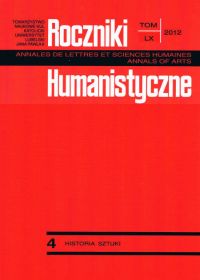The garden belonging to the Łoś family palace in Narol as an example of the so-called Polish „Italian garden”
Abstract
The article describes the origin and gives an outline of the history of the Łoś family palace in Narol. The history of the town and of the baroque residence is shown against the background of the most important historical events connected with establishing the town Florianów by Florian Łaszcz at the end of the 15th century, its destruction by a Cossack incursion, and its reconstruction as the so-called Narol Miasto.
The author presents the history of establishing the palace-garden complex in Narol, starting with buying the Narol estate and funding a church in Narol by his son, Feliks Antoni Łoś, through its development and changes, especially ones of the palace garden landscaping. A gardener, Norbert Hammerschmidt, was entrusted with drawing up a project of an axial terraced garden, called Italian, and the realization of it. Establishing in Narol in the second half of the 18th century a garden that by its form and style was close to geometrical Italian gardens of the Renaissance epoch inclines one to consider the Narol palace garden as an example of traditionalism in Polish garden art, manifested by establishing a specific kind of garden called „Polish Italian garden”.
A significant event in the history of the Narol complex was its destruction in the period of World War I, and then its reconstruction made at the beginning of the 20th century by Jadwiga Korytowska, the granddaughter of the last owner belonging to the Łoś family – Tadeusz. In that period the garden parterres were supplied with new flower-beds in the form of arabesques and flower carpets. New species of ornamental plants were introduced, including many exotic ones.
The numerous transformations, however, did not significantly change the original arrangement and function of the garden, which despite the destructions caused by World War II and by later neglect has kept its traditional form.
The present restoration of the palace-garden complex in Narol is being conducted by the „Pro Academia Narolense” foundation.
Copyright (c) 2012 Roczniki Humanistyczne

This work is licensed under a Creative Commons Attribution-NonCommercial-NoDerivatives 4.0 International License.





